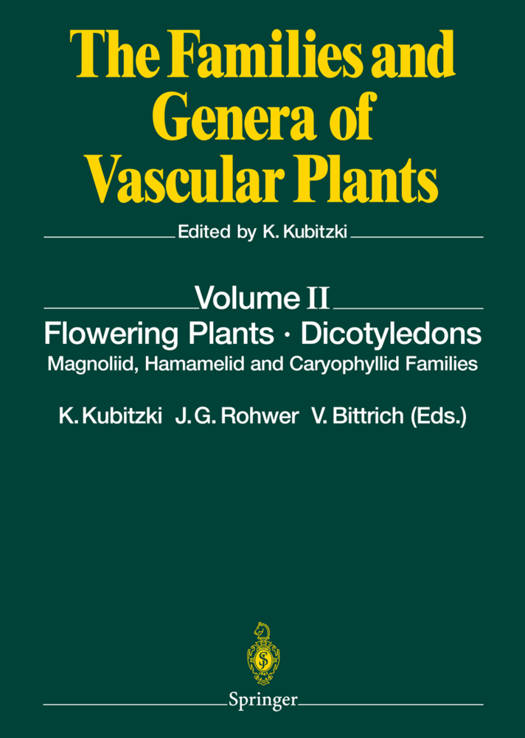
- Afhalen na 1 uur in een winkel met voorraad
- Gratis thuislevering in België vanaf € 30
- Ruim aanbod met 7 miljoen producten
- Afhalen na 1 uur in een winkel met voorraad
- Gratis thuislevering in België vanaf € 30
- Ruim aanbod met 7 miljoen producten
Zoeken
Flowering Plants - Dicotyledons
Magnoliid, Hamamelid and Caryophyllid Families
€ 349,45
+ 698 punten
Omschrijving
This volume - the first of this series dealing with angiosperms - comprises the treatments of 73 families, representing three major blocks of the dicotyledons: magnoliids, centrosperms, and hamamelids. These blocks are generally recognized as subclasses in modern textbooks and works of reference. We consider them a convenient means for structuring the hundreds of di- cotyledon families, but are far from taking them at face value for biological, let alone mono- phyletic entities. Angiosperm taxa above the rank of family are little consolidated, as is easily seen when comparing various modern classifications. Genera and families, in contrast, are comparatively stable units -and they are important in practical terms. The genus is the taxon most frequently recognized as a distinct entity even by the layman, and generic names provide the key to all in- formation available about plants. The family is, as a rule, homogeneous enough to conve- niently summarize biological information, yet comprehensive enough to avoid excessive re- dundance. The emphasis in this series is, therefore, primarily on families and genera.
Specificaties
Betrokkenen
- Uitgeverij:
Inhoud
- Aantal bladzijden:
- 653
- Taal:
- Engels
- Reeks:
- Reeksnummer:
- nr. 2
Eigenschappen
- Productcode (EAN):
- 9783540555094
- Verschijningsdatum:
- 28/07/1993
- Uitvoering:
- Hardcover
- Formaat:
- Genaaid
- Afmetingen:
- 178 mm x 254 mm
- Gewicht:
- 1356 g

Alleen bij Standaard Boekhandel
+ 698 punten op je klantenkaart van Standaard Boekhandel
Beoordelingen
We publiceren alleen reviews die voldoen aan de voorwaarden voor reviews. Bekijk onze voorwaarden voor reviews.







